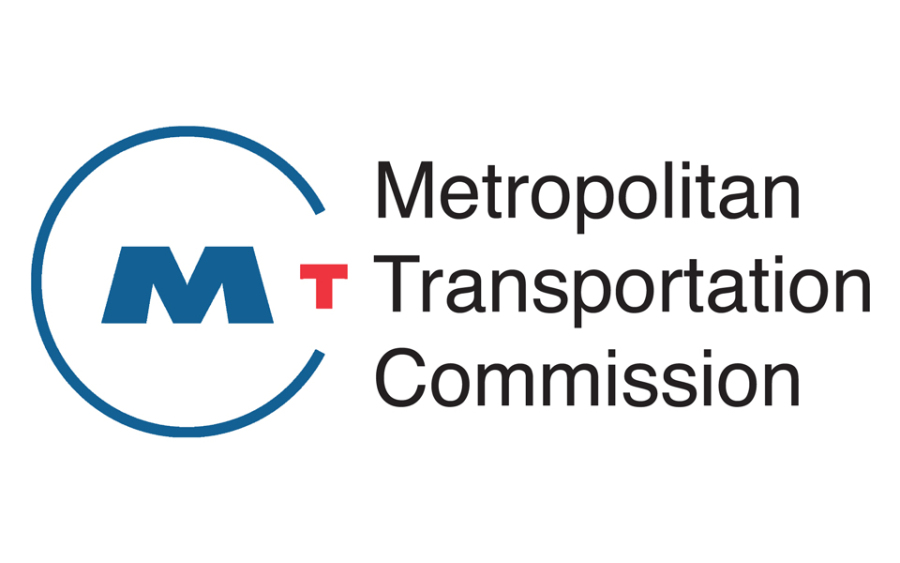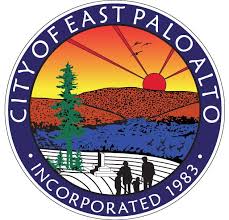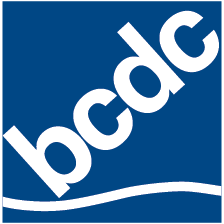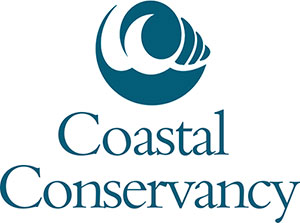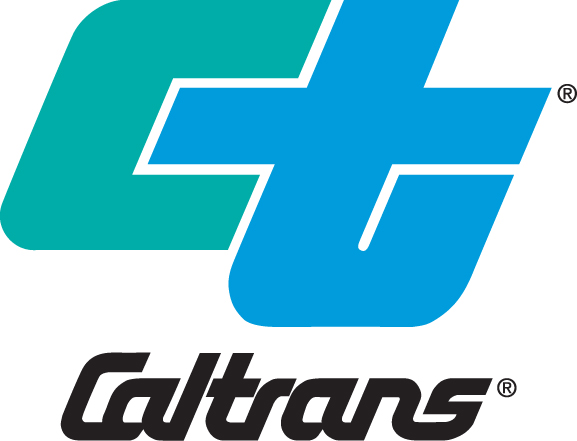Dumbarton Bridge West Approach + Adjacent Communities Resilience Study
SB1 Adaptation Planning Grant: Final Case Study
Summary
The key objective of this project was to develop a plan to provide near- and long-term flood protection for the Dumbarton Bridge west approach and adjacent communities, while promoting the ecological and social resilience of the surrounding lands and communities. The team developed guiding principles to inform the development of the proposed alternatives including community input, flood protection, ecosystem services and benefits, adaptation pathways and strategy compatibility, public access, and monitoring and adaptive management. The role of ecosystem services and benefits, and the use of green infrastructure was of particular importance to a number of the stakeholders and community. The project team formulated two draft near-term and three draft long-term alternatives that were made up of different combinations of individual strategies. These draft alternatives were further refined to one near-term and two long-term alternatives. The three final alternatives were then further developed in corresponding Implementation Plans.
The project included stakeholder and public engagement to provide an opportunity for a range of stakeholders and the local community to coordinate with the Project Team on existing projects, to discuss the ways in which the project area is vulnerable to sea level rise and flooding, to understand how this vulnerability affects the community and various assets, and to provide input on the development of adaptation strategies. A Stakeholder Working Group including local government, community groups, business organizations, environmental organizations, and state and federal agencies met during the project to advise the Project Management Team and consultant team. Additionally, the project team partnered with local community-based organizations Acterra and Nuestra Casa who facilitated workshops and community events in the disadvantaged communities in East Palo Alto and Menlo Park to build community capacity for climate resilience.
Lead Agency and Partnerships
The lead agency was the Metropolitan Transportation Commission (MTC). The project team included many local and regional agencies, who collectively provided input and guidance on the project (including technical knowledge), contributed local knowledge, involved the local community and stakeholders, and ensured consistency with other local and regional goals related to sea level rise and climate change adaptation. MTC partnered with the following agencies to form the project team:
- City of East Palo Alto
- The City of Menlo Park
- San Francisquito Creek Joint Powers Authority (SFCJPA)
- The Bay Conservation and Development Commission (BCDC) - Adapting to Rising Tides (ART) Program
- The Bay Area Regional Collaborative (BARC)
- CalTrans
- California State Coastal Conservancy
Drivers
Based on previous studies, the Dumbarton Bridge corridor and surrounding area is vulnerable to 24 inches of sea level rise as early as 2050. Protecting the Dumbarton Bridge west approach and surrounding vulnerable community assets is a priority for MTC and key area stakeholders. MTC received a Caltrans SB 1 Adaptation Planning Grant, supplemented by additional MTC/Bay Area Toll Authority funds, to support this project.
Engagement Process
A Stakeholder Working Group (SWG) formed of 17 organizations including local government, community groups, business organizations, environmental organizations, state and federal agencies was developed to advise the project team. The SWG was considered particularly important given the number of other projects occurring in the project area as well as some other community capacity building projects on climate change underway in East Palo Alto. The SWG met four times during the project process and their role was to: 1) Help identify and fill data gaps; 2) Ensure coordination with other related projects; 3) Advise on the community engagement approach; 4) Help with sharing information about the project within their organizations; 5) Provide ideas, input and feedback for adaptation strategies; and, 6) Help identify potential project opportunities, including partnerships and funding, to move forward shared goals.
Additionally, there were several parallel climate change community engagement efforts being undertaken within the project area at the time of the project by community-based organizations Acterra and Nuestra Casa. The project team was concerned about introducing either meeting fatigue or confusion through hosting additional and separate sea level rise planning meetings with the community. As a result, and at the recommendation of the City of East Palo Alto, Nuestra Casa, and Acterra, the community engagement strategy focused on “going to the community” through existing City and community organized events and working closely with aforementioned community organizations focused on building community capacity for climate resilience. This included pop-ups at existing community events and a series of interactive facilitated discussions on sea level rise and the project goals, criteria and adaptation scenarios.
Climate Impact Area
The flood risk of the Dumbarton Bridge corridor and surrounding areas could have both localized and regional impacts. The Dumbarton Bridge is a major east-west corridor that connects southern San Mateo County and southern Alameda County; any closure would compromise the region’s mobility and connectivity, forcing traffic to detour along already congested freeways to the north or south. Local corridors are also vulnerable to flooding. The disadvantaged community of East Palo Alto, as well as the surrounding cities of Menlo Park, Palo Alto, and others, would need to divert to local roads; this would potentially add a significant amount of additional travel time to commutes.
An alternative evaluation framework was developed to facilitate a performance assessment of the proposed adaptation strategy alternatives with respect to the project goals. The development of the adaptation alternatives evaluation framework was informed by the guiding principles, MTC’s objectives for the study, the review of relevant local studies, the results of the vulnerability assessment, and goals and evaluation criteria from other similar sea level rise adaptation planning projects in the Bay Area and beyond. In addition, local knowledge and expertise of stakeholders and the community informed the development of the adaptation alternatives evaluation framework and its criteria. Criteria were organized around Engineering, Environmental, Feasibility, Social, and Transportation categories.
Funding Source
The total project budget was $300,000. This project was funded partially by SB 1 CalTrans Adaptation Planning Grant Program funds ($200,000), which support planning actions at the local and regional levels that advance climate change efforts on the transportation system. MTC also used Bay Area Toll Authority funds ($100,000), which are used to support projects that protect/address bridge infrastructure.
Research and Data
The Project Team reviewed previous and ongoing studies to coordinate existing data, identify data needs and collect additional data, and conduct refined flood modeling to better understand flood risks in the project area. In particular, the ART Regional Sea Level Rise maps were used for sea level rise data, and hydrodynamic modeling was conducted for the project area to gain a better understanding of detailed flood pathways. Where applicable, the Project Team tried to leverage available data sources, such as Cal-Adapt, and research from other agencies, such as Federal Highway Administration (FHWA), for guidance.
Challenges
Challenges included obtaining information and data from multiple jurisdictions, agencies, and area stakeholders. There are a number of different studies and projects in the area, and the project team had to find a way to coordinate with different stakeholder leads. This was resolved through the stakeholder working group meetings, as well as individual meetings and follow-ups with stakeholders.
Additionally, there were challenges with identifying effective community engagement strategies. The project team partnered with local community-based organizations Nuestra Casa and Acterra to build community capacity through existing networks and conducted a number of different outreach activities with different approaches to facilitate meaningful feedback.
Outcomes
The project identified three alternatives that would protect the project area. The alternatives are as follows:
- Alternative 1 – Near-Term: interim flood protection and restoration preparation This alternative is a series of strategies that address near-term flooding impacts to the project site and the future restoration and/or management by the Don Edwards San Francisco Bay National Wildlife Refuge and South Bay Salt Pond Restoration Project. The flood protection strategies would mitigate against flooding from smaller flood events (equivalent to MHHW +24”) and are intended to lessen the frequency and magnitude of flood impacts until a long-term alternative is implemented.
- Alternative 2 – Long Term: Protect in Place This alternative is a long-term strategy to provide flood protection to critical infrastructure and the community by protecting assets in place up to 83 inches of sea level rise. This alternative would construct a levee along the north and south side of SR 84 and maintain the highway at its present elevation and alignment.
- Alternative 3 – Long Term: Raise the Road (2 options) This alternative is a long-term strategy to provide flood protection to critical infrastructure and the community by protecting and adapting assets up to 83 inches of sea level rise. Alternative 3 would raise SR 84 within the project area and place it on a causeway (i.e., an elevated bridge-type structure) to protect the highway from sea level rise and flooding, reduce the length of levee required, and allow for hydrologic and ecologic connectivity. This alternative would effectively relocate the touchdown point of the bridge farther inland.
Implementation plans were developed for each alternative, including strategy narratives, key features, key actions needed to implement each alternative, ecosystem services, plan view schematics and typical sections, cost estimates, and project implementation phasing and timelines.
Several participants of the project management team will continue to discuss how to refine and move these strategies forward. This includes coordinating with other agencies and stakeholders, such as the San Mateo County Flood and Sea Level Rise Resiliency District, to form partnerships for further strategy development, collaborate on related projects and activities, and leverage funding opportunities.
Many of the stakeholder working group members were also interested in being involved or kept abreast of future discussions. Nuestra Casa and Acterra will be valuable partners in keeping community participants involved.
Replicability
The project process may be replicated for other areas vulnerable to sea level rise and flooding, both within the Bay Area and outside. This process includes: 1) Conducting a detailed vulnerability analysis for the project area; 2) Conducting community engagement and stakeholder outreach; 3) Identifying vulnerable assets and infrastructure; 4) Developing a wide range of adaptation strategies; 5) Evaluating the adaptation strategies against a set of criteria; and, 6) Developing an implementation plan for the most promising strategies. While this project was specific to the Dumbarton Bridge west approach and adjacent areas, the process could be replicated for any vulnerable area at any scale.
Additional Resources
- BCDC Adapting to Rising Tides Program and Project Portfolio: http://www.adaptingtorisingtides.org/
- San Francisquito Creek Joint Powers Authority and SAFER Bay Project: http://sfcjpa.org/
- The final report is available on BCDC’s Adapting to Rising Tides Partnerships website: https://www.adaptingtorisingtides.org/project/resilientresilience-partnerships/
Further Information
For more information about this project, please contact Stefanie Hom at shom@bayareametro.gov or at 415.778.6756.


